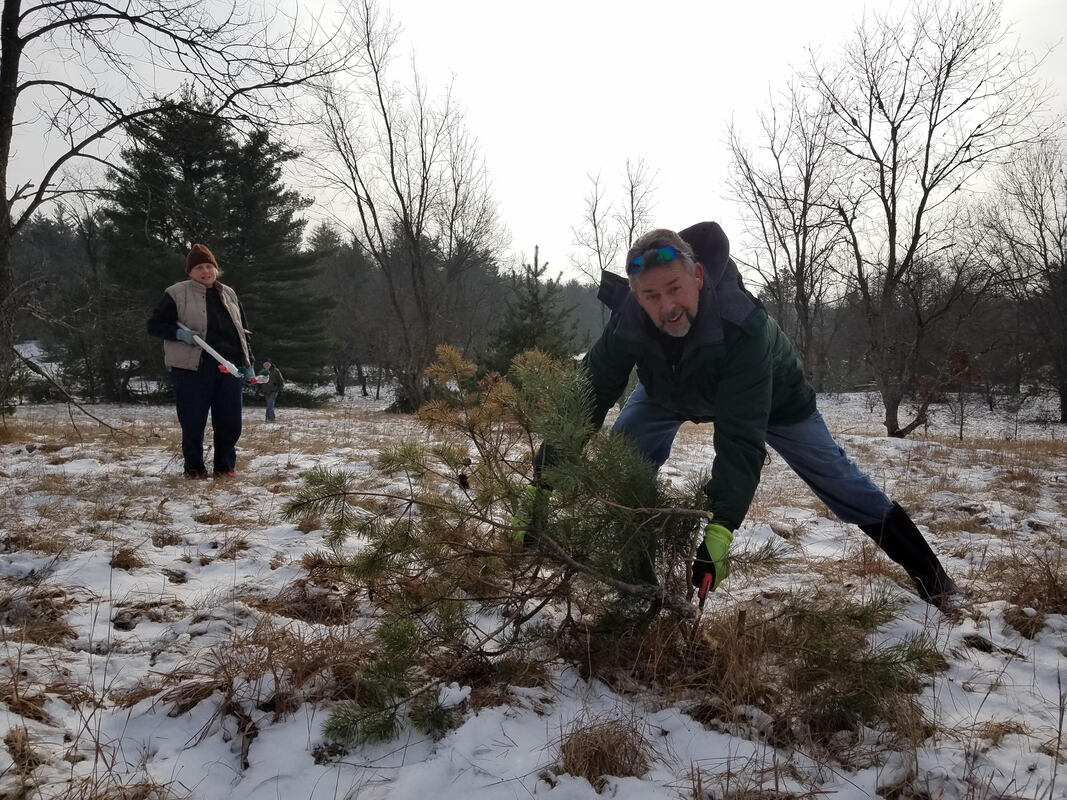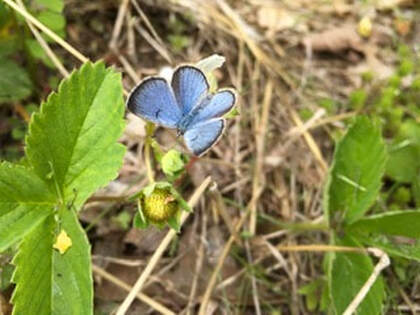|
Become a Nature Sanctuary Steward and help our native habitats thrive
By Sally Wagoner We are lucky here in Newaygo County, for there are growing programs and growing interest in protecting our fragile native ecosystems. And you can help be part of this movement by becoming a Nature Sanctuary Steward and Volunteer. These Newaygo County Nature Sanctuaries are seeking volunteers for upcoming habitat restoration days: * Tuesday, February 11, 10am-1pm, Karner Blue Nature Sanctuary, Spruce Avenue south of Croton Drive. * Tuesday, February 18, 10am – 1pm, Brooks Prairie, between Newaygo and Croton, on Middle Drive, 1/3rd mile south of E. 56th St, east side of road. * Friday, February 21, 10am - 1pm, Newaygo Prairie, South East corner of S Poplar Ave & E. 56th St., Newaygo. To register for the workdays of your choice, contact Robb Johnston, Michigan Nature Association Regional Stewardship Manager: [email protected]; (517) 643-6864. “Our main management goal at these sites is to provide habitat for the endangered Karner Blue Butterfly, states Robb. “Newaygo County has a mosaic of Karner Blue populations and we are trying to create more space for them by encouraging growth of wild lupine (their host plant) and nectar sources (their food).” As a volunteer, you will help with cutting and hauling invasive trees and bushes, and possibly burning brush piles. Tools will be available on site. Volunteers are urged to wear boots and warm layers of clothing depending on the weather. As a Steward of these Nature Sanctuaries, you will be a protector, an educator, a champion and a warrior in helping our native plants, animals and pollinators to thrive. “Our current focus at these Sanctuaries is to prevent shrubs and trees from encroaching into the prairie,” continued Robb. “By controlling the spread of invasive species, trees and shrubs (mostly honeysuckle, black cherry, and red pine), we allow more sunlight to reach ground level, which encourages the growth of the plants Karner Blue butterflies need”. School youth groups are eagerly sought to help with restoration projects, and to become Stewards of these Nature Sanctuaries. Group leaders and teachers are urged to contact Robb Johnston for information. Native species of bees, butterflies, moths, bats and other pollinators are diminishing, and some are threatened with extinction if there is no intentional intervention. Loss of native habitats are a major cause of pollinator demise due to the growth of human communities, deforestation and unsustainable forest management, land use changed to agriculture, pesticides, herbicides, pollution and climate change. Disruptions of these original balanced ecosystems are affecting food systems not only for our native animals and insects, but for people as well. Loss of insects means loss of pollination of grasses, plants, fruit and nut trees, which diminishes food supplies for turkeys, deer, bear and people. Loss of pollinators also affects agricultural success in our home gardens as well as large farms. Habitat conservation programs help communities, homeowners, farmers and growers increase native plant restoration on state lands, as well as private property. Farmers can get yearly payments from the federal government if they plant environmentally beneficial plants instead of crops on parts of their land. Information on this can be found at the USDA website, under Conservation Programs, or contact the local Newaygo Conservation District for help. Stewardship of a local Nature Sanctuary can do all of the beneficial things for our eco-systems mentioned here. But stewardship can also do something perhaps less tangible, but with a broader rippling effect: stewardship of our local Nature Sanctuaries gives us the opportunity to develop a personal relationship with nature and the “other-than-human-beings”. Many who have studied our current species and habitat collapse state that this is at the heart of environment restoration and the healing of the Earth. So when you come to one of the Nature Sanctuary volunteer days, before getting out the saws and pruners, try starting with this: Greet the Sanctuary and all the ‘other-than-human-beings’ when you arrive. Introduce yourself, and tell them why you are there – intending to help the struggling native plants and insects by removing plants that crowd out their natural sources of sustenance. Ask for their guidance as we humans work to the best of our ability to restore some of the damage that we have caused. Plants, animals, insects and the land itself are all aware of “presence” and “activities”, and they respond to communication. We all come from a heritage of living close with the earth and our “other-than-human-being” relatives. When we reach out with intention, then pause and listen, we are then able to learn. That is when the relationship begins. That is when reciprocity occurs. Comments are closed.
|
Letter to the Editor PolicyNear North Now welcomes original letters from readers on current topics of general interest. Simply fill out the form below. Letters submissions are limited to 300 words. Archives
July 2024
Categories |


 RSS Feed
RSS Feed